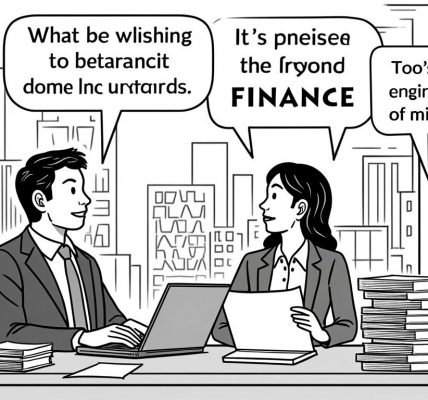
Profiling Famous Hedge Fund Managers and Their Strategies
Reading time: 12 minutes
Ever wondered how the world’s most successful hedge fund managers consistently outperform markets while others struggle to beat basic index funds? You’re about to discover the strategic secrets behind legendary investment minds who’ve generated billions in returns.
Table of Contents
- Understanding Hedge Fund Legends
- Ray Dalio: The Principles-Driven Pioneer
- George Soros: The Master of Market Psychology
- James Simons: The Quantitative Revolutionary
- Strategic Approaches: A Comparative Analysis
- Universal Principles Among Elite Managers
- Implementation Insights for Modern Investors
- Mastering Hedge Fund Wisdom: Your Strategic Advantage
- Frequently Asked Questions
Understanding Hedge Fund Legends
Here’s the straight talk: The hedge fund industry isn’t just about picking stocks—it’s about developing systematic approaches that work across market cycles. These legendary managers didn’t achieve success through luck; they built repeatable frameworks that generate consistent alpha.
Key Success Markers:
- Consistent long-term outperformance (10+ years)
- Risk-adjusted returns exceeding market benchmarks
- Adaptability across different market environments
- Scalable investment processes
Well, here’s what separates the legends from the rest: They’ve mastered the delicate balance between systematic discipline and adaptive flexibility. Let’s examine how three iconic managers achieved this mastery.
Ray Dalio: The Principles-Driven Pioneer
The All Weather Strategy Revolution
Ray Dalio transformed hedge fund management by creating the world’s largest hedge fund, Bridgewater Associates, with over $140 billion in assets under management. His approach centers on radical transparency and systematic risk management.
Core Strategy Components:
- All Weather Portfolio: Designed to perform well across different economic environments
- Pure Alpha: Seeks uncorrelated returns through global macro strategies
- Risk Parity: Balances risk contributions rather than dollar allocations
The Economic Machine Philosophy
Dalio views economics as a machine with predictable patterns. His investment process involves:
- Identifying Economic Cycles: Understanding where economies sit in debt, productivity, and political cycles
- Asset Allocation: Positioning across bonds, stocks, commodities, and currencies based on cycle analysis
- Risk Management: Using correlation analysis to ensure portfolio resilience
Pro Tip: Dalio’s success stems from treating investment decisions like scientific hypotheses—every position must have a clear thesis that can be tested and refined.
George Soros: The Master of Market Psychology
The Theory of Reflexivity
George Soros built his legendary reputation on understanding how market participants’ perceptions shape reality. His Quantum Fund generated average annual returns of over 30% for three decades.
Reflexivity in Action:
- Market prices influence fundamental conditions
- Participant bias creates investment opportunities
- Boom-bust cycles become self-reinforcing
The Soros Method: Macro Momentum
Quick Scenario: Imagine Soros analyzing the 1992 European Exchange Rate Mechanism. He identified fundamental inconsistencies between economic policies and currency pegs, then positioned massively to profit from the inevitable breakdown.
Strategic Elements:
- Macro Analysis: Identifying unsustainable economic or political situations
- Asymmetric Betting: Making large, concentrated bets when conviction is high
- Timing Flexibility: Waiting patiently for optimal entry points
His most famous trade—shorting the British pound in 1992—generated over $1 billion in profit and earned him the title “The Man Who Broke the Bank of England.”
James Simons: The Quantitative Revolutionary
The Medallion Fund Phenomenon
James Simons revolutionized investing by applying advanced mathematics to financial markets. His Medallion Fund achieved the best risk-adjusted returns in hedge fund history, averaging 39% annual returns after fees for over three decades.
Quantitative Advantages:
- Mathematical pattern recognition
- Systematic bias elimination
- High-frequency execution capabilities
- Continuous model refinement
The Renaissance Approach
Unlike traditional fundamental analysis, Simons’ team focuses on:
- Data Mining: Analyzing vast datasets for statistical relationships
- Model Development: Creating algorithms that identify market inefficiencies
- Risk Controls: Implementing systematic position sizing and portfolio management
- Execution Excellence: Minimizing market impact through sophisticated trading systems
The key insight: Markets contain countless small inefficiencies that, when systematically exploited with proper risk management, generate consistent profits.
Strategic Approaches: A Comparative Analysis
| Manager | Primary Strategy | Risk Approach | Time Horizon | Key Edge |
|---|---|---|---|---|
| Ray Dalio | Global Macro/Risk Parity | Systematic Diversification | Long-term Cycles | Economic Understanding |
| George Soros | Macro Momentum | Concentrated Positions | Medium-term Trends | Market Psychology |
| James Simons | Quantitative/Statistical | Systematic Controls | Short-term Patterns | Mathematical Models |
| Warren Buffett | Value Investing | Quality Focus | Very Long-term | Business Analysis |
Universal Principles Among Elite Managers
Risk Management as Foundation
Every legendary manager prioritizes risk management over returns. Here’s their shared wisdom:
Performance Comparison: Risk-Adjusted Returns
Systematic Thinking Over Intuition
Successful hedge fund managers rely on processes, not hunches:
- Hypothesis Testing: Every investment idea requires clear, testable assumptions
- Performance Attribution: Understanding why strategies work enables improvement
- Continuous Learning: Adapting methods based on market evolution
Implementation Insights for Modern Investors
Challenge 1: Information Overload
The Problem: Modern investors face overwhelming data streams that can paralyze decision-making.
Hedge Fund Solution: Create systematic filters and focus frameworks. Dalio’s approach involves identifying the 5-7 most important factors for any decision, while Simons relies on statistical significance to separate signal from noise.
Practical Application:
- Define your investment criteria clearly
- Establish data sources and update frequencies
- Create decision trees for different scenarios
Challenge 2: Emotional Decision Making
The Problem: Market volatility triggers emotional responses that destroy returns.
Hedge Fund Solution: Systematic processes remove emotion from execution. Renaissance Technologies trades purely on algorithmic signals, while Bridgewater uses “radical transparency” to challenge biased thinking.
Challenge 3: Scale and Diversification
The Problem: Individual investors struggle to achieve proper diversification with limited capital.
Hedge Fund Solution: Focus on uncorrelated strategies rather than just asset classes. Soros demonstrates that understanding correlation patterns enables effective risk management even with concentrated positions.
Mastering Hedge Fund Wisdom: Your Strategic Advantage
Ready to transform legendary insights into personal investment success? Here’s your practical roadmap for implementing hedge fund thinking:
Your Implementation Strategy:
- Develop Your Investment Philosophy: Like Dalio’s principles, create written guidelines that govern your decisions during both calm and volatile periods
- Build Systematic Processes: Establish clear criteria for entry, exit, and position sizing—eliminate guesswork from your investment process
- Focus on Risk-Adjusted Returns: Measure success by Sharpe ratio, not just absolute returns—consistent performance beats occasional home runs
- Embrace Continuous Learning: Markets evolve constantly; your strategies must adapt while maintaining core disciplines
- Start Small, Scale Systematically: Test strategies with limited capital before committing significant resources
The hedge fund legends profiled here didn’t achieve success overnight—they spent decades refining their approaches through systematic experimentation and relentless self-improvement. Their combined wisdom offers a blueprint for intelligent investing that transcends market cycles.
As artificial intelligence and quantum computing reshape financial markets, which traditional hedge fund strategies will prove most adaptable, and how will you position yourself to benefit from these technological disruptions while maintaining the timeless principles of risk management and systematic thinking?
Frequently Asked Questions
Can individual investors really apply hedge fund strategies effectively?
Absolutely, but with important modifications. While you can’t replicate the exact infrastructure of a $100 billion fund, you can adopt their systematic thinking, risk management principles, and disciplined approach to decision-making. Focus on the underlying philosophy rather than trying to copy specific trades or complex instruments. Many successful individual investors use simplified versions of diversification strategies similar to Dalio’s All Weather approach or apply Soros-style macro thinking to their portfolio allocation decisions.
What’s the most important lesson from these legendary hedge fund managers?
The paramount lesson is that successful investing requires systematic processes that remove emotion from decision-making. All three managers—Dalio, Soros, and Simons—built repeatable frameworks that work across different market conditions. They don’t rely on intuition or market timing; instead, they follow disciplined approaches based on clear principles. This systematic thinking, combined with rigorous risk management, creates the foundation for long-term investment success regardless of your capital size or investment experience.
How do I know which hedge fund strategy approach suits my investment goals?
Your optimal approach depends on your time horizon, risk tolerance, and available resources. If you prefer long-term, lower-maintenance investing, consider Dalio’s diversified approach focusing on different economic environments. For those interested in shorter-term opportunities and comfortable with higher volatility, Soros-style macro thinking might appeal to you. If you have strong analytical skills and enjoy data analysis, elements of Simons’ quantitative approach could work well. The key is starting with one approach, testing it systematically, and gradually incorporating elements from other strategies as you gain experience and confidence.

Article reviewed by Michelle Hope, Real Estate and Investment Expert, on July 2, 2025




